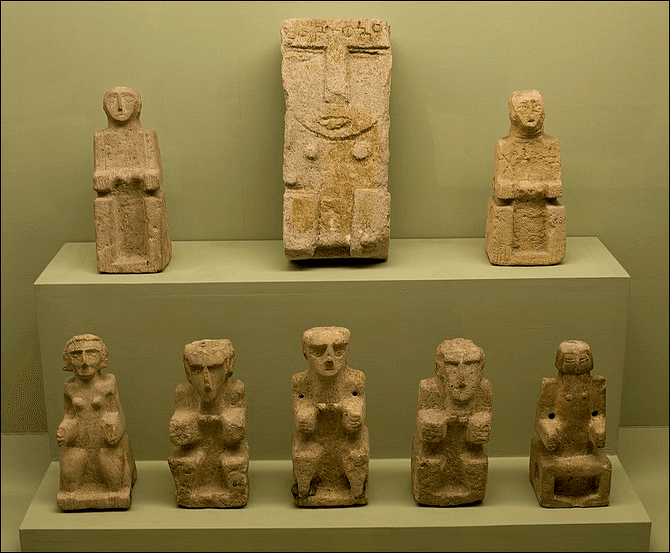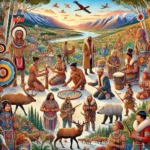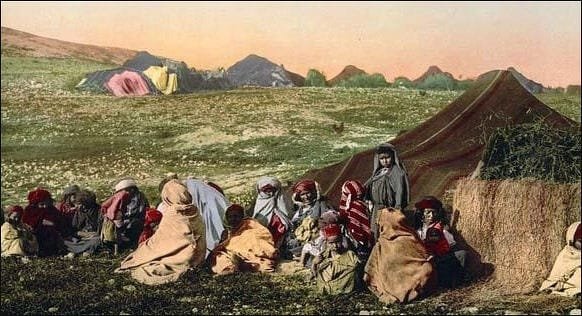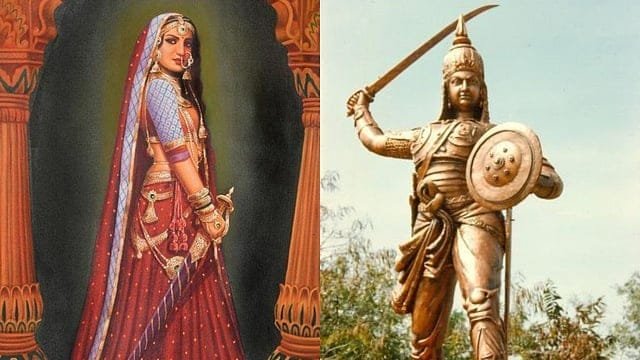When we think of Arabia today, we usually imagine Islam as its central religion and culture. But before the rise of Islam in the 7th century CE, the Arabian Peninsula had a rich and diverse religious landscape. It was not a land of a single god or one system of belief. Instead, it was home to tribal religions, local deities, animistic practices, and sacred traditions that reflected the life and environment of the desert.
This article will guide you through that world—the gods, goddesses, spirits, rituals, and beliefs of pre-Islamic Arabia.
- The World of Pre-Islamic Arabia
The Arabian Peninsula is a vast land of deserts, oases, mountains, and coastal regions. Life here was shaped by scarcity of water, dependence on trade routes, and the strength of tribal networks.
Because tribes were the basic unit of society, religion was also tribal. Each tribe often had its own guardian deity, sacred stone, or shrine. At the same time, some gods and goddesses became famous across multiple tribes and were worshipped widely.
- Key Features of Indigenous Arabian Religion
To understand the spiritual world of pre-Islamic Arabs, let’s look at some key characteristics:
🔹 Animism and Spirit Belief
Many Arabs believed that spirits, called jinn, lived in natural objects—rocks, trees, springs, deserts.
These spirits could be both helpful and harmful. People offered sacrifices or recited charms to keep them happy.
🔹 Polytheism (Many Gods)
Each tribe had its own gods, and there was no single unified belief system.
Gods were seen as protectors, providers of rain, fertility, health, and victory in war.
🔹 A High God, But Distant
Most Arabs believed in a supreme creator god known as Allah (literally, “The God”).
But Allah was seen as too distant for daily life. Instead, people prayed to lesser gods and goddesses, who were thought to be closer and more responsive.
🔹 Sacred Stones and Sanctuaries
Many tribes worshipped stones, meteors, or special rocks, believing them to be the seat of divine power.
Shrines and sanctuaries (ḥarams) were set up around such objects.
The most famous was the Kaaba in Mecca, which contained 360 idols representing different tribal gods.
- Major Deities of Arabia
Although hundreds of local deities existed, a few stood out as widely worshipped across Arabia.
🕋 Allah
Meaning simply “The God.”
Recognized as the creator of the universe but rarely worshipped directly.
People often called on Allah in times of extreme crisis, but for daily needs they turned to other gods.
👩👩👧 The Three Goddesses – “Daughters of Allah”
In many parts of Arabia, three powerful goddesses were believed to be daughters of Allah. They were seen as intermediaries between people and the high god.
- Al-Lāt – Goddess of fertility, prosperity, and sometimes war. Associated with mother-goddess figures.
- Al-‘Uzzā – A goddess of might and protection, connected to Venus (the morning star).
- Manāt – Goddess of fate, destiny, and death. Worshippers sought her favor before battles and journeys.
These three were especially important in Mecca and had shrines across Arabia.
🗿 Hubal
Chief idol of the Kaaba in Mecca.
Brought to Arabia possibly from Syria.
Associated with divination and fate—people would cast arrows in front of Hubal’s idol to seek guidance.
⛰️ Dhu’l-Sharā (or Dushara)
The main god of the Nabataeans (in Petra, northern Arabia).
A mountain and storm god, protector of caravans and trade.
🌙 Almaqah and ☀️ Shams (South Arabia)
In the kingdoms of Saba (Sheba) and Himyar in Yemen:
Almaqah – moon god, protector of agriculture and irrigation.
Shams – sun goddess, worshipped with temples and rituals.
These gods had organized priesthoods and were linked to advanced irrigation systems.

💕 Wadd
God of love, friendship, and affection. His symbol was a snake or a human figure.
🪨 Sa‘d
Worshipped as a rock-deity. People believed divine presence dwelled in stones.
👩❤️👨 Isāf and Nā’ila
Two idols near the Kaaba. According to tradition, they were lovers who committed a sin in the sanctuary and were turned into stone.
- Spirits and Supernatural Beings
Apart from gods, pre-Islamic Arabs believed in many supernatural beings:
Jinn – Invisible spirits living in deserts, caves, and ruins. They could inspire poets, cause sickness, or bring luck.
Ghouls (Ghūl) – Dangerous desert spirits that haunted travelers.
Ancestor spirits – Some tribes honored the souls of their forefathers, believing they continued to watch over them.
- Sacred Places and Rituals
🕋 The Kaaba in Mecca
The holiest shrine even before Islam.
Contained 360 idols of different gods.
A place where all tribes could worship together, even while keeping their own gods.
Associated with pilgrimage (ḥajj), where people circumambulated the Kaaba, offered sacrifices, and performed rituals—later adopted into Islamic practice in a transformed form.
🕌 Local Shrines (Ḥarams)
Each tribe often had a sacred space where violence and bloodshed were forbidden.
These sanctuaries were places of peace, ritual, and seasonal gatherings.
🩸 Sacrifices
Animals were sacrificed to gods for rain, victory, or protection.
Sometimes blood was smeared on sacred stones as part of the ritual.
🔮 Divination
People used arrows, lots, or omens to seek guidance from gods—especially in matters of war, travel, or marriage.
- Foreign Influences
Arabia was not isolated. Trade routes connected it to Mesopotamia, Syria, and Africa. This meant that Arabian religion absorbed influences:
From Mesopotamia: astral worship (sun, moon, Venus).
From Nabataea (Petra): gods like Dushara and Allāt.
From South Arabia: organized temples and priestly cults of Almaqah and Shams.
- The Transition Toward Islam
By the 6th century CE, Arabia’s religious world was shifting:
Contact with Judaism and Christianity brought new ideas of one God.
Many Arabs grew dissatisfied with polytheism and idol worship.
Some individuals, called ḥanīfs, rejected idols and searched for a purer monotheism.
When Islam emerged under Prophet Muhammad in the 7th century, it retained some traditions (pilgrimage to the Kaaba, the idea of Allah as the supreme God) but rejected polytheism, idol worship, and tribal gods.
Before Islam, Arabia was not a spiritual desert—it was a land full of gods, goddesses, spirits, and sacred traditions. People saw the divine in stones, stars, sun, and moon. They lived with a strong sense of fate, protected by tribal gods, and fearful of jinn and spirits.
Islam transformed this world completely, bringing a strict monotheism and erasing the cults of Hubal, Al-Lāt, Al-‘Uzzā, and Manāt. Yet, to understand Islam’s birth, we must first understand this indigenous religious landscape that shaped the beliefs, practices, and imagination of the Arabian people.












